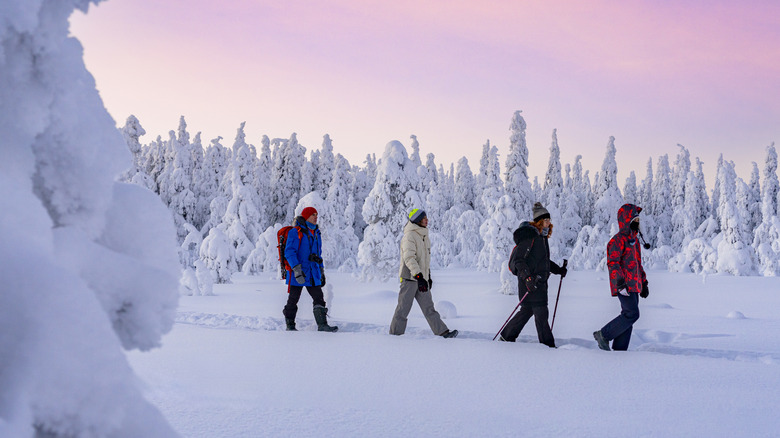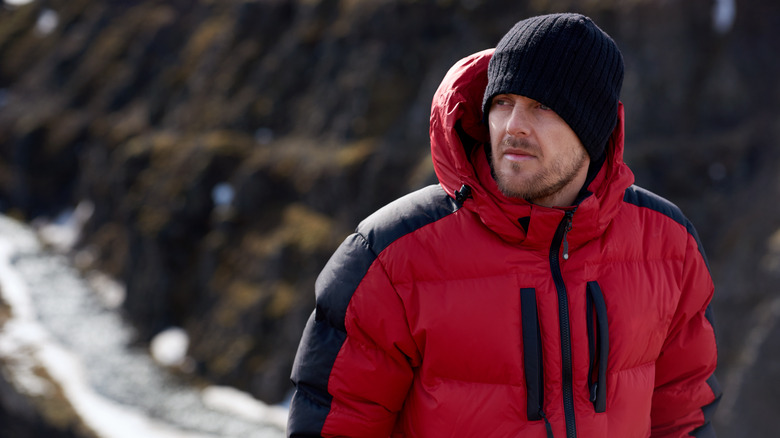How To Choose The Best Coat For Your Next Winter Adventure
We may receive a commission on purchases made from links.
Once the chill of winter sets in, a number of outdoor enthusiasts hunker down and wait for spring's warmer weather before they plan their next excursion. However, from skiing to snowshoeing, there are a myriad of outdoor adventures to be had during the winter months, as well. Obviously, keeping warm is a priority when spending time outdoors this time of year. That can be a bit more complex than it sounds, as different activities require different clothing and gear. What you need to wear on a winter hike is not the same as the gear you need for skiing. So, it is important to know how to choose the best coat for your next chilly adventure.
When choosing the best winter coats, be mindful of the type of activity you will be doing and the temperature range you will be in. Remember, you may need multiple coats in your winter wardrobe if you go to different regions or participate in various outdoor sports. There is no one perfect coat for all areas, conditions and activities. Much of this decision-making comes down to choosing coats made from the proper material for the activities and weather conditions you will be in.
Should you pick a winter coat made from down or synthetic material?
When it comes to choosing the best winter coat to rock for your outdoor activities, picking between down insulation or some synthetic material is at the center of the equation. The material the winter coat is made from affects not only the insulation properties, but also its packability, weight, and waterproofing. Choosing the right material will be based on a variety of factors related to your needs, including weather, how much packing space you have, and, of course, the price.
Down is the traditional material for winter coats. This natural insulation comes from the plumage under the feathers of ducks and geese. It is lightweight, has outstanding insulating properties, and is easy to compress into a small, packable size. Down is durable and long-lasting. However, it is also more expensive than most synthetics. Additionally, if it gets wet, a down jacket becomes heavy, does not dry quickly, and doesn't insulate well. Down requires special care and cleaning in order to remain effective throughout its lifespan, so is among the outdoor gear you should never buy used, as you don't know how it was cared for by its previous owner.
There are a wide variety of coats made from modern synthetic materials. The biggest advantage to synthetic materials is that they are water-resistant. Coats made from breathable synthetic materials are also ideal for active outdoor pursuits. Additionally, while most synthetics aren't quite as efficient at insulating as down, some models, such as the Columbia Powder Lite, are engineered for a higher warm-to-weight ratio than standard synthetic materials. Synthetic jackets also tend to be less expensive than down. However, they are not as durable, are bulkier, and do not compress as well for packing.

